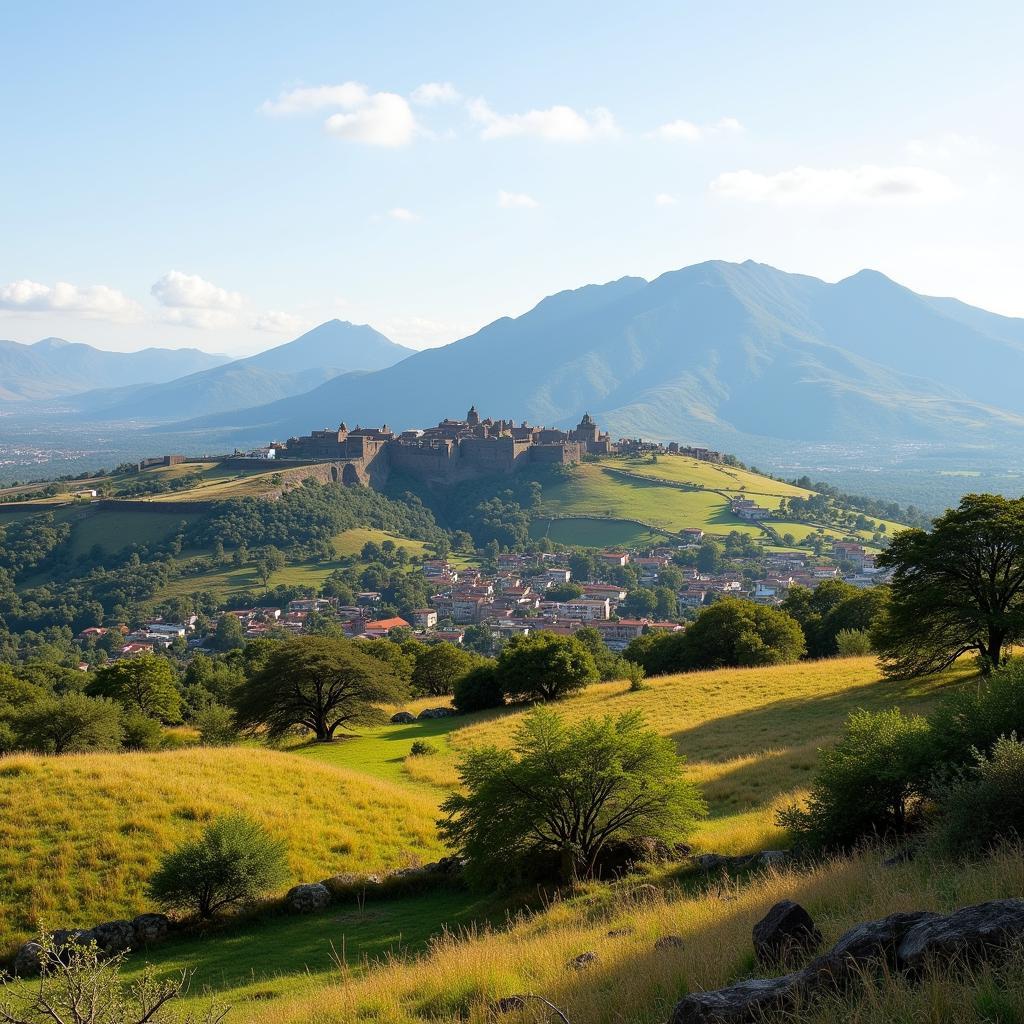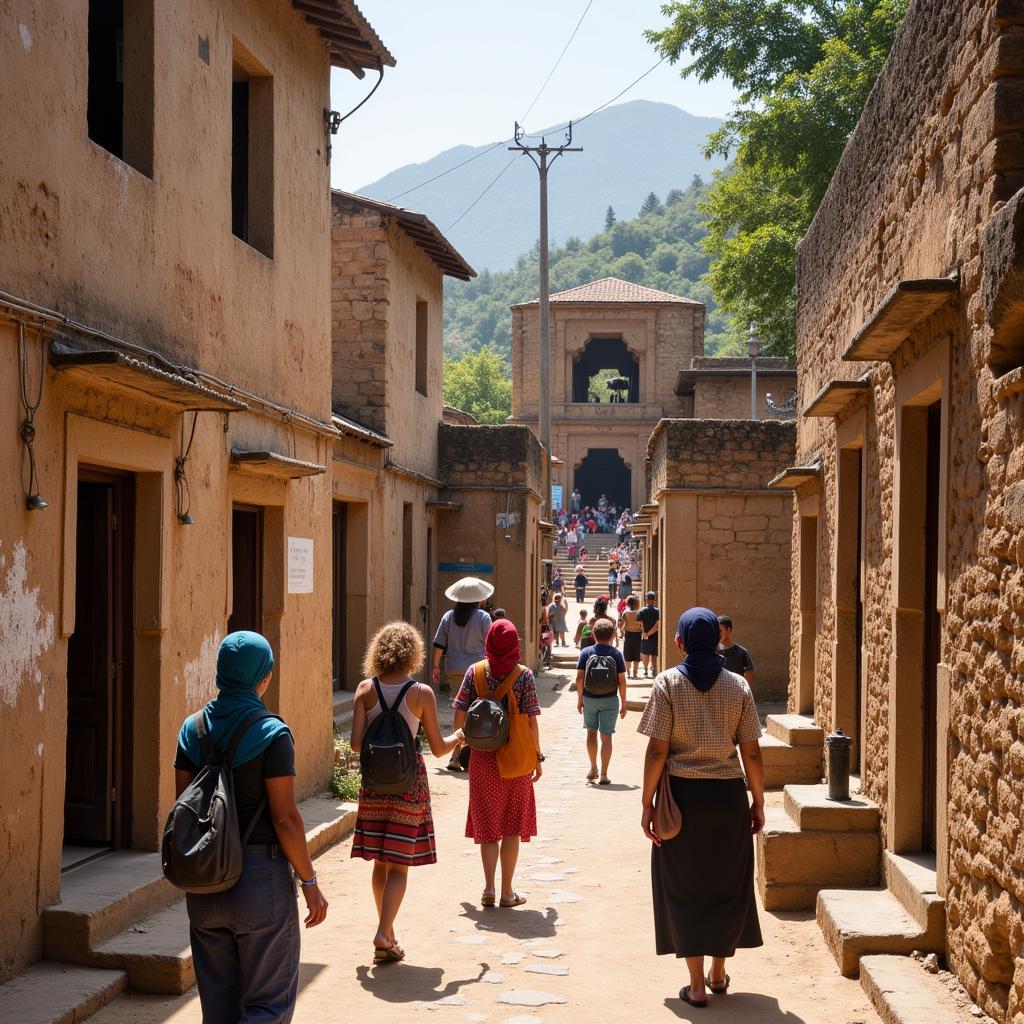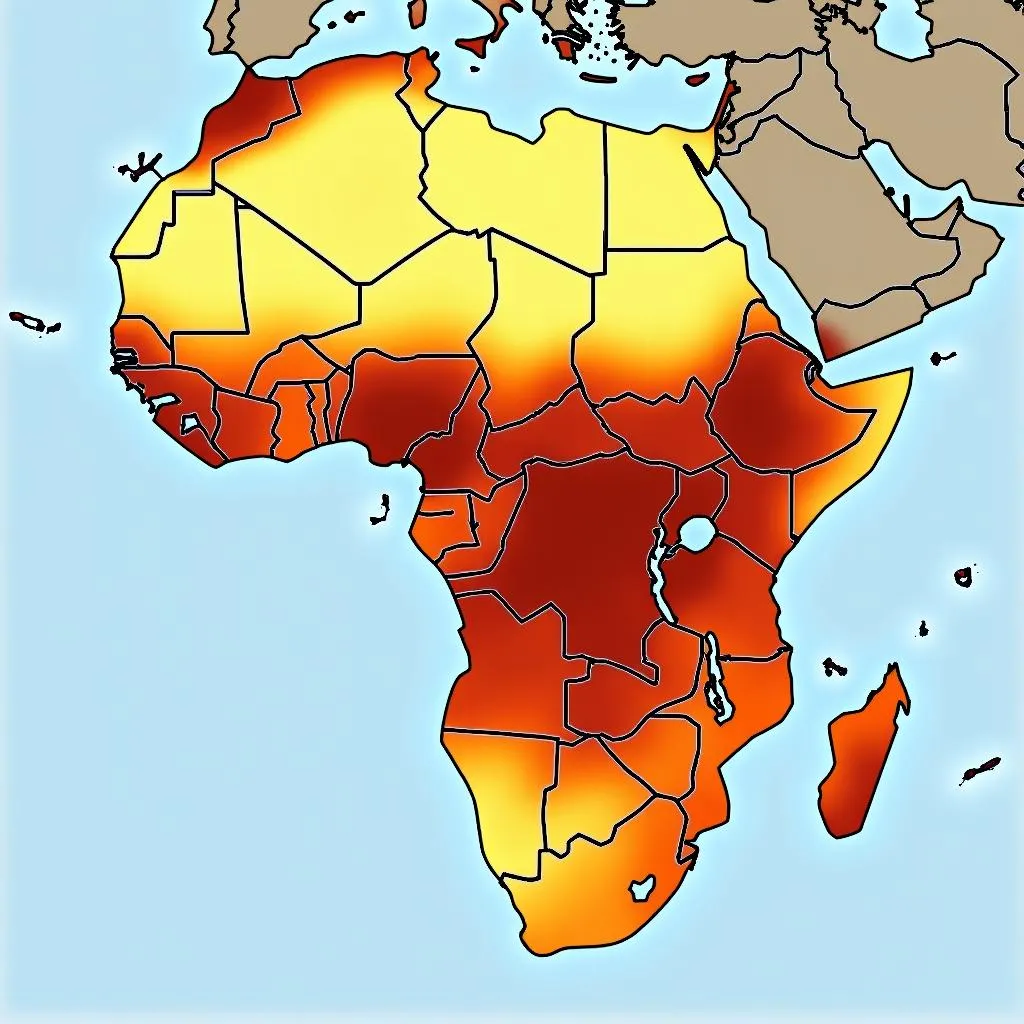African Country Most UNESCO Sites
Ethiopia boasts the most UNESCO World Heritage Sites in Africa. This East African nation is a treasure trove of cultural and natural wonders, captivating travelers with its rich history, diverse landscapes, and vibrant traditions.
Discovering Ethiopia’s UNESCO Treasures
Ethiopia’s nine UNESCO World Heritage sites offer a glimpse into the country’s fascinating past and breathtaking natural beauty. From ancient kingdoms and rock-hewn churches to unique wildlife and dramatic landscapes, Ethiopia’s UNESCO designations highlight its significant contributions to human history and the natural world.
Why Does Ethiopia Have So Many UNESCO Sites?
Ethiopia’s remarkable concentration of UNESCO sites stems from its long and uninterrupted history as an independent nation. Unlike many other African countries that experienced colonization, Ethiopia retained its cultural heritage and traditions, allowing for the preservation of its unique historical and natural treasures. This rich history, coupled with the country’s diverse geography, has created a remarkable tapestry of cultural and natural wonders, worthy of global recognition.
african country starting with s
Exploring the Rock-Hewn Churches of Lalibela
Perhaps the most iconic of Ethiopia’s UNESCO sites are the rock-hewn churches of Lalibela. These eleven monolithic churches, carved out of solid rock in the 12th and 13th centuries, are a testament to the ingenuity and devotion of the ancient Ethiopian civilization. Their intricate designs and spiritual significance make them a must-see for any visitor to Ethiopia.
Unraveling the Mysteries of Axum
The ancient city of Axum, another UNESCO-designated site, offers a glimpse into the powerful Axumite Kingdom, which flourished between the 1st and 7th centuries AD. The towering obelisks, royal tombs, and ancient ruins of Axum tell the story of a sophisticated civilization that played a significant role in trade and cultural exchange between Africa, Europe, and Asia.
Immersing in the Natural Wonders of the Simien Mountains National Park
Ethiopia’s natural beauty is also well-represented among its UNESCO sites. The Simien Mountains National Park, with its dramatic peaks, deep valleys, and unique wildlife, is a hiker’s paradise. Home to the endangered Ethiopian wolf and the Walia ibex, the park offers stunning views and unforgettable encounters with some of Africa’s most remarkable creatures.
“Ethiopia’s UNESCO sites offer a remarkable journey through time and nature,” says Dr. Ayana Mekonnen, a renowned Ethiopian historian. “From the spiritual heart of Lalibela to the majestic peaks of the Simien Mountains, these sites capture the essence of Ethiopia’s rich heritage and its enduring connection to the natural world.”
Which African Country Has The Most UNESCO Sites?
Ethiopia holds the distinction of having the most UNESCO World Heritage Sites in Africa. Its nine designated sites highlight the country’s exceptional cultural and natural heritage.
What Makes Ethiopia’s UNESCO Sites Unique?
Ethiopia’s UNESCO sites are unique due to the country’s long history of independence and cultural preservation. This has allowed for the protection of its diverse heritage, ranging from ancient kingdoms and rock-hewn churches to stunning natural landscapes.
 Exploring Ethiopia's Diverse Landscapes: From Ancient Cities to Mountain Peaks
Exploring Ethiopia's Diverse Landscapes: From Ancient Cities to Mountain Peaks
“The preservation of these sites is crucial for future generations,” adds Professor Abebe Kebede, an expert in cultural heritage management. “They provide a tangible link to our past and offer valuable lessons for the future.”
 UNESCO Sites in Ethiopia: Preserving Cultural Heritage for Future Generations
UNESCO Sites in Ethiopia: Preserving Cultural Heritage for Future Generations
A Journey Through Time and Nature
Ethiopia, the African Country Most Unesco Sites, offers an unforgettable journey through time and nature. Its nine UNESCO World Heritage Sites are a testament to the country’s rich history, diverse landscapes, and enduring cultural traditions. From the spiritual wonders of Lalibela to the breathtaking beauty of the Simien Mountains, Ethiopia’s UNESCO sites offer a glimpse into the heart and soul of this remarkable East African nation.
FAQ
-
How many UNESCO World Heritage Sites are in Ethiopia?
Ethiopia has nine UNESCO World Heritage Sites. -
What is the most famous UNESCO site in Ethiopia?
The rock-hewn churches of Lalibela are arguably the most famous. -
Why does Ethiopia have so many UNESCO sites?
Ethiopia’s long history of independence and cultural preservation has contributed to its high number of UNESCO sites. -
What kind of UNESCO sites are in Ethiopia?
Ethiopia has both cultural and natural UNESCO World Heritage Sites. -
Where are the Simien Mountains located?
The Simien Mountains are located in northern Ethiopia. -
What is the significance of Axum?
Axum was the center of the powerful Axumite Kingdom, a significant civilization in ancient history. -
How can I visit Ethiopia’s UNESCO sites?
Various tour operators offer specialized trips to explore Ethiopia’s UNESCO World Heritage sites.
Need support? Contact us 24/7: Phone: +255768904061, Email: kaka.mag@gmail.com, or visit us at Mbarali DC Mawindi, Kangaga, Tanzania.

